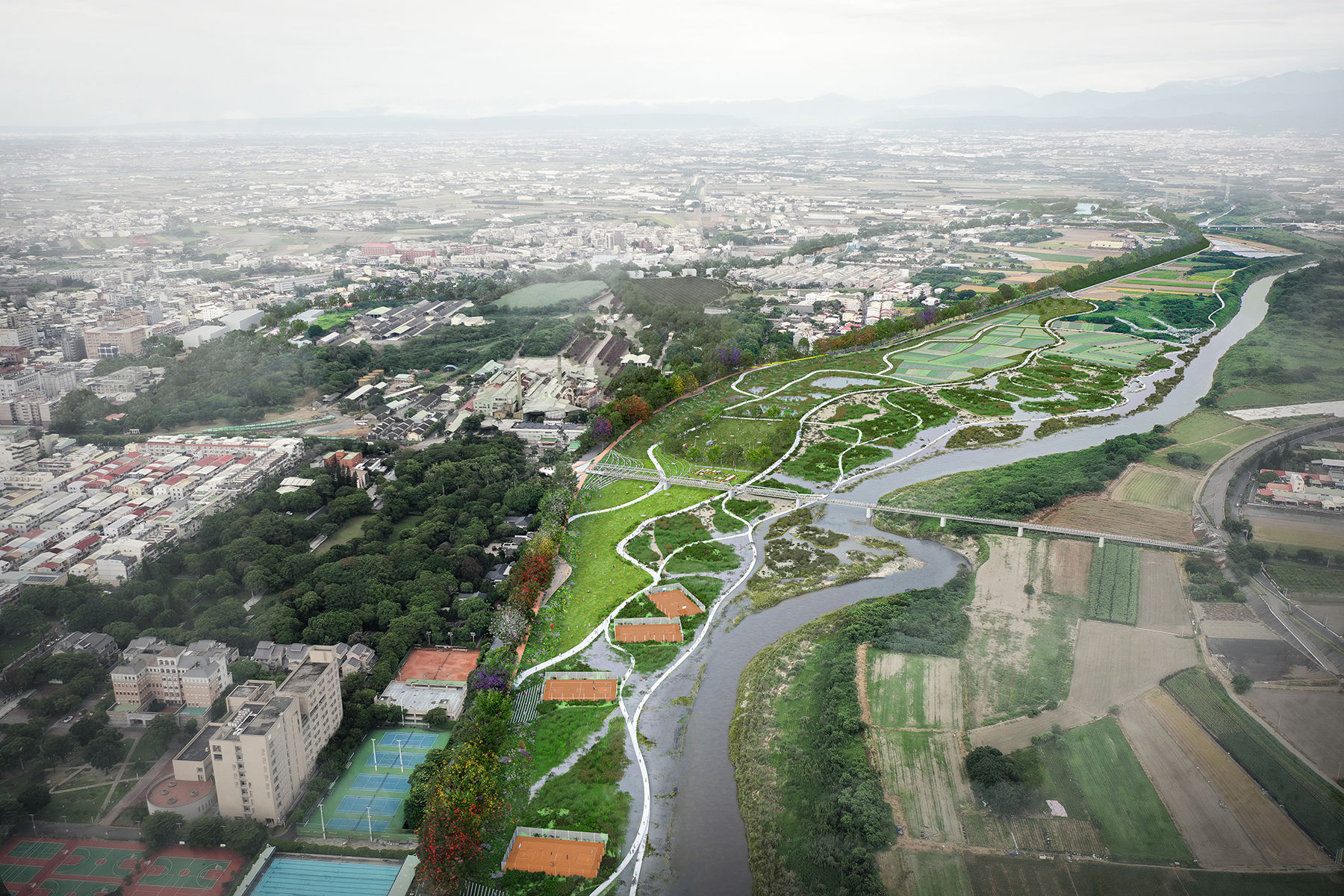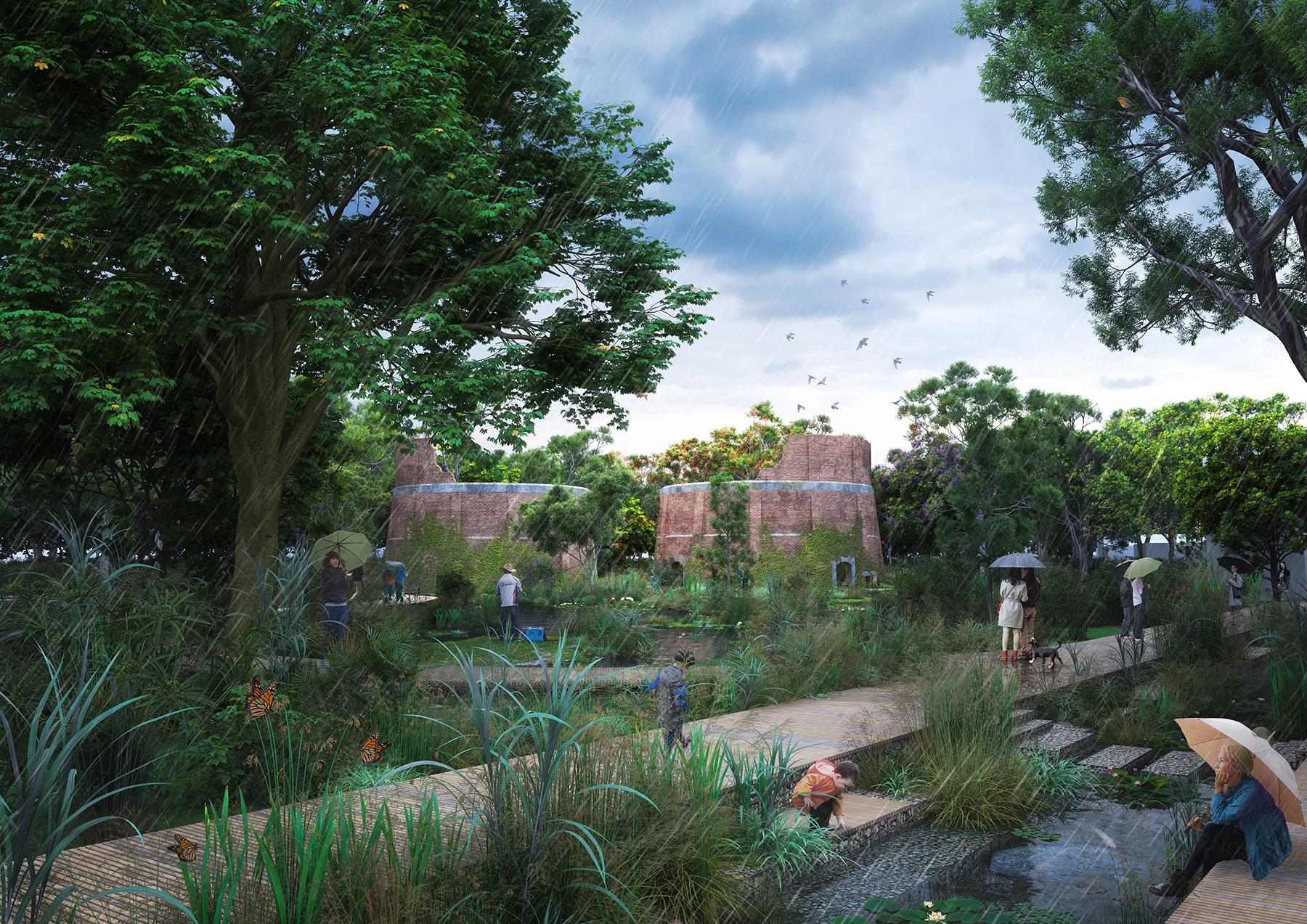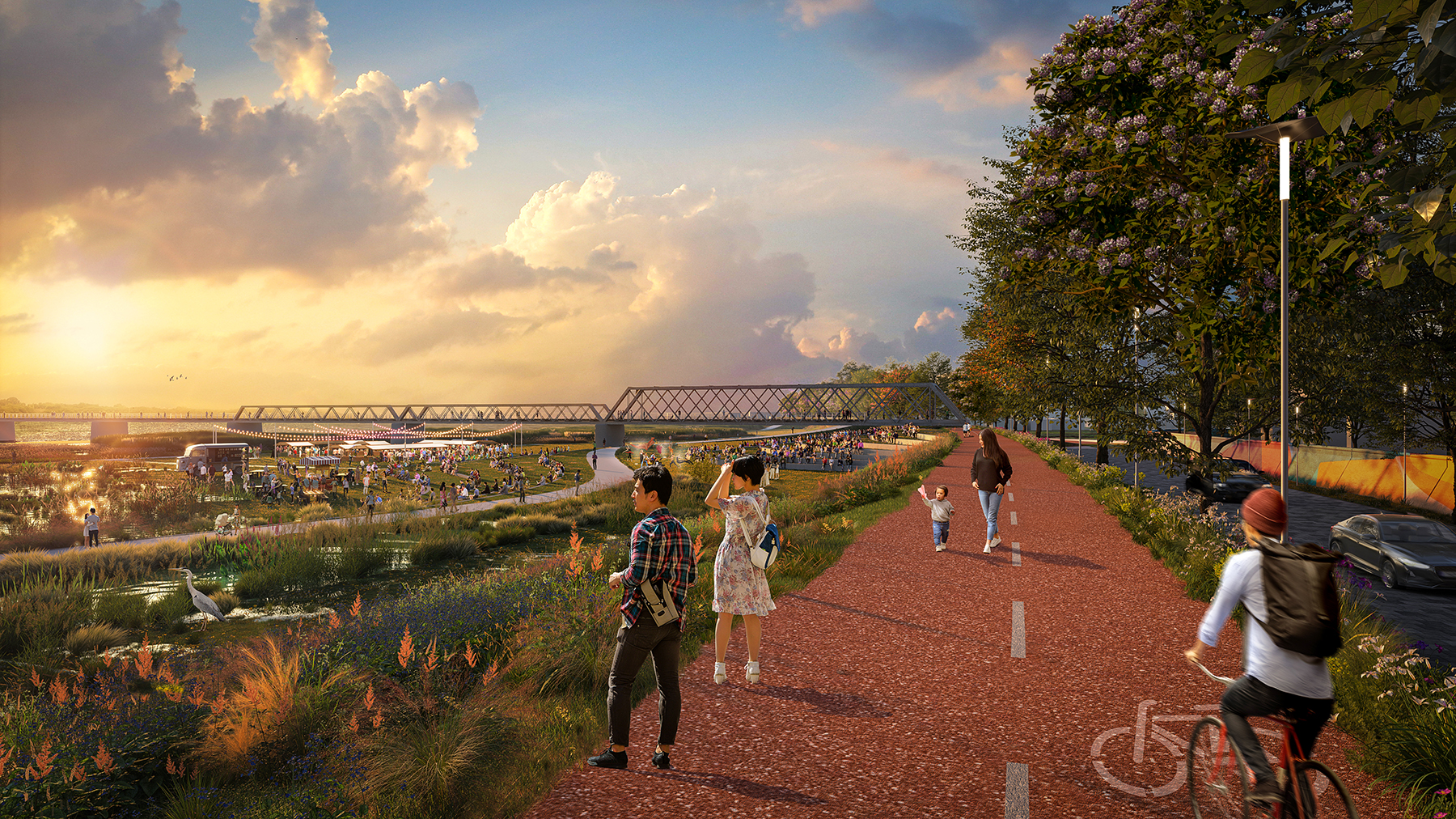By Jay Landers
Home to approximately 70,000 people on the island of Taiwan, the town of Huwei is similar to innumerable cities around the world in that its waterway network is not up to the task of accommodating the larger precipitation volumes that are anticipated to result from climate change. Looking to increase the town’s flood resilience, beautify urban areas, add parklike features, and improve local water quality, Taiwan’s government recently hired the Dutch architecture firm MVRDV to overhaul Huwei’s entire water network, beginning with redevelopment along two key local waterways.
Comprehensive strategy
In September, the Taiwan Ministry of Economic Affairs selected MVRDV’s proposal for the redevelopment of a section of the Beigang River and what the firm refers to as the Anqingzhen Channel in Huwei, says Hui-Hsin Liao, an associate director and the head of Taiwan for the firm.
Originally a small river passing through the town, the Anqingzhen Channel was converted over time into an irrigation and drainage system, portions of which were enclosed underground.

The proposal includes a “master plan concept for the whole town, including the riverside and the channel that runs through the town center,” Liao says. Heavy rains during the rainy season generate runoff that overwhelms the channel and other drainage features in Huwei.
According to a Jan. 3 news release from MVRDV, the master plan “gives the town a comprehensive strategy for flood resilience while improving the quantity and quality of the town’s available water, as well as integrating mobility networks such as cycle paths, cultural amenities, and ecological systems to create new connections between Huwei, its citizens, nature, and the river.”
Showcase for green infrastructure
The project’s planning scope includes all of Huwei, while the current design scope is limited to a 1,200 m long section of the Anqingzhen Channel where it passes beside the historic Huwei Sugar Factory, a local landmark that has been in operation for more than a century. The design scope also includes an approximately 3,400 m long section of the Beigang River and an existing stormwater detention facility known as the Pinghe Flood Detention Pond.
The project elements included as part of the design scope offer a “showcase” for what can be done on a larger basis throughout Huwei, Liao says. The plan calls for adding multiple green infrastructure features in series to capture, clean, and store water within the town. Most such features will be constructed on school grounds and other publicly owned land.

The low-impact development features are intended to cleanse water before it enters the Anqingzhen Channel, improving water quality within the channel itself. Where the channel passes beside the site of a former alcohol factory that is no longer used, the site will be converted into a forested park near the town’s urban core. “By doing so, the Anqingzhen Channel can return to its former status as an important focus for leisure activities,” according to the news release.
“Part of the city-wide flood control system designed to retain, purify, and reuse rainwater for leisure and biodiversity, the water levels of the Anqingzhen Channel here will vary according to the seasons, creating small islands for a number of leisure activities,” according to the release.
Liao notes that the parklike amenities created to manage and treat stormwater runoff will bring benefits to the town year-round. “When it's dry season, (it) could still be a nice friendly park,” she says.
As for the Pinghe Flood Detention Pond, the facility will be converted into a much more ecologically beneficial lake and a destination for pedestrians and cyclists. Currently, the poor water quality of the runoff entering the detention pond greatly limits the variety of vegetation able to grow there, Liao says.
Reconnecting the riverfront
Where it flows through the southern edge of Huwei, the Beigang River is separated from the town by a dike, which protects the town from flooding. However, the dike and the sugar factory effectively cut off the town from the river, curtailing public access to, and enjoyment of, the riverfront.
Linking the town’s urban district with the river and reconnecting people with the waterfront along the river are key goals of the project.
The design calls for transforming the dike to the south of the city center “into an accessible urban space,” according to the news release. By creating connections between the town and the dike, the project aims to open “the area between the river and the dike for further uses such as viewing platforms and sports fields,” the release states. The multipurpose area will be designed to accommodate different levels of flooding.

The dike itself will be incorporated within three new bicycle routes that comprise loops of 2.7, 6.4, and 8.4 km.
Five goals
Ultimately, the design addresses five goals: making Huwei’s water system “resilient, ecological, connected, cultural, and — given that completion is expected as early as 2026 — feasible,” according to MVRDV’s release.
The project also is expected to benefit economic development by helping promote greater tourism to the sugar factory.
With an estimated overall cost of 450 million New Taiwan dollars ($15.1 million), the project is scheduled to be completed by December 2026.
Additional project participants include co-architect The Urbanists Collaborative. Elite Engineering is providing engineering services, while Deltares is serving as the water consultant.
This article first appeared in Civil Engineering Online.



